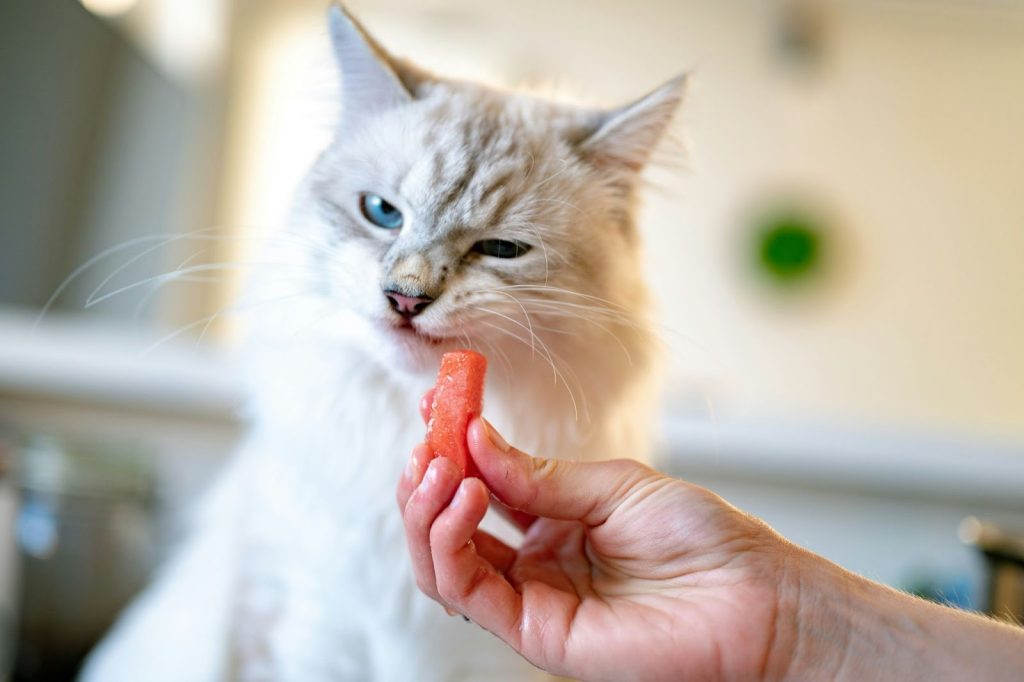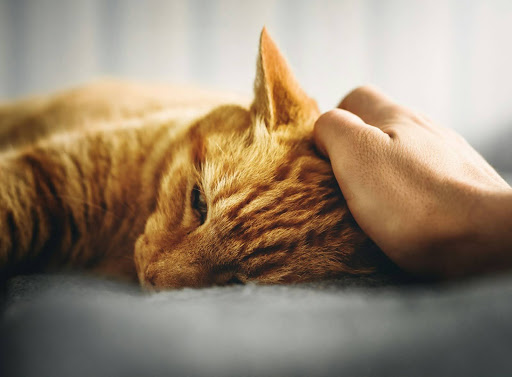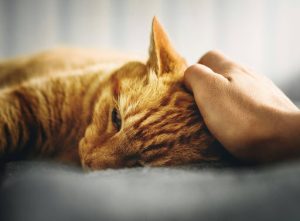Caring for a cat often means noticing the quiet, subtle ways they tell us something isn’t quite right. Unlike dogs, many cats hide discomfort instinctively. That is why small changes in habits, posture or mood can be the earliest clues of illness.
This guide will help you recognise common warning signs, decide what needs urgent attention, and feel more confident about when to call your vet. It is not a diagnosis tool, but a calm, practical piece for those moments when something feels off.
The Golden Rule: Behaviour Changes are Your First Clue
Cats are creatures of routine. A shift in their normal patterns is often more meaningful than any single symptom. Ask yourself:
- Are they less interested in food or water, or suddenly ravenous or very thirsty
- Have they become withdrawn, hiding away, or unusually clingy
- Are they sleeping far more, or pacing and restless at night
- Has their litter tray routine changed, including accidents, straining, or visiting more often
- Do they seem grumpy when touched, or avoid jumping onto favourite perches
If the answer to any of these is yes and it lasts more than a day, a conversation with your vet is sensible. If it appears suddenly and your cat seems distressed, treat it as urgent.
Physical Signs You Should Never Ignore
Some symptoms deserve prompt attention regardless of your cat’s temperament or age.
- Breathing changes such as fast, shallow, open-mouth breathing, wheezing, or effort using their tummy muscles
- Pain indicators including hunched posture, tense facial expression, narrowed eyes, flinching when lifted, and growling when touched
- Gastrointestinal signs such as repeated vomiting, diarrhoea that lasts beyond 24 hours, blood in stool or vomit, or inability to keep water down. For symptom-led guidance, see advice on cat vomiting and diarrhoea
- Urinary issues, including frequent trips to the tray with little or no urine, vocalising when passing urine, or any sign of blood. In male cats, this can be life-threatening and is an emergency
- Neurological concerns such as sudden wobbliness, collapse, tremors, seizures, head tilt, or walking in circles
- Wounds or swellings, including bites, abscesses, or hot, painful lumps
- Rapid weight change that you can notice over a few weeks
If you would like a little reassurance while you decide the next step, our FAQs offer calm, plain-spoken answers to common worries
Changes that can be subtle, but matter
- Coat and grooming. A previously tidy cat becoming unkempt, matted, or greasy can suggest pain, dental disease, or arthritis
- Mouth odour. Strong or sweet smells can point to dental disease or metabolic illness
- Eyes and nose. Discharge, squinting, cloudiness, or a permanently dilated pupil
- Movement. Hesitation to jump, stiffness after rest, slipping on floors, or avoiding stairs
Urgent vs Non-urgent: A Quick Comparison
Use this as a guide. If in doubt, call your vet for advice.
| Situation | Examples | Action |
| Emergency | Straining to urinate with little or no urine produced, open-mouth breathing, blue or very pale gums, seizures, collapse, suspected poisoning, severe trauma such as a road traffic accident | Seek emergency vet care immediately |
| Prompt same day | Repeated vomiting, persistent diarrhoea, sudden severe pain, significant wounds, marked lethargy, refusal of all food and water for 24 hours, blood in urine or stool | Phone your vet today for an appointment |
| Soon, within 48–72 hours | Mild cough or sneeze without distress, reduced appetite, limping without obvious severe pain, mild eye or ear discharge, increased thirst, gradual weight change | Book a routine appointment and monitor closely |
If you need to plan or check whether your area is covered, you can view the areas we cover before you call.
How to Check Your Cat at Home
A gentle once-over can offer useful information to share with your vet. Keep it calm and brief.
- Observe first. Watch their breathing pattern, posture, and how they move around the room
- Nose to tail look. Eyes bright, nose clean, mouth odour and gums pink and moist, ears clean and comfortable to touch
- Coat and skin. Part the fur to look for scabs, fleas or dandruff. Note any new lumps
- Hydration check. Lift the skin at the scruff. If it rests slowly, dehydration may be present. Also note dry, tacky gums
- Temperature feel. Hot ears or paws can be normal after sleep or warmth, but persistent heat with lethargy deserves attention
- Litter tray log. Note frequency, volume, and any straining or vocalising
If your cat becomes stressed, stop and try again later. Forcing an examination can make things worse, and you may miss subtle signs.
What Common Illnesses Look Like in Cats
Urinary tract problems including blockages
- Straining, frequent tray visits, small dribbles, blood, or crying
- Licking the genital area, restlessness, or hiding
- Male cats are at particular risk of blockage, which is an emergency
Dental disease
- Bad breath, drooling, pawing at the mouth, favouring soft food, chewing on one side, or dropping food
- Red, sore gums or visible tartar
- Left untreated, dental issues affect appetite and overall health
Kidney disease and hyperthyroidism more common in older cats
- Increased thirst and urination, weight loss despite a good appetite, especially with hyperthyroidism
- Vomiting, dull coat, and reduced energy
- Subtle at first and often picked up with blood and urine tests
Respiratory infections
- Sneezing, nasal discharge, runny eyes, mild fever, reduced appetite
- Kittens and elderly cats can become unwell quickly if dehydrated
Pain and arthritis
- Reluctance to jump, sleeping in lower places, overgrown claws, grooming less, and grumpiness when handled
- A comfortable, warm environment with low-jump options helps, but treatment is often needed
If you are facing difficult decisions or grieving a loss, you are not alone. Many families find comfort in the reflective space of coping with pet loss and the supportive remembrance wall.
When Your Cat Will Not Eat or Drink

Missing a single meal is not unusual for a cat after a fright or a change in routine. More than 24 hours without food, or 12 hours without water, is concerning. For kittens, elderly cats, or those with known conditions, call earlier. Try these supportive steps while you arrange advice:
- Offer a small amount of a familiar, fragrant wet food warmed slightly
- Provide fresh water in a clean, wide bowl. Some prefer running water from a fountain
- Keep the room quiet, warm, and safe. Avoid new foods, treats, or milk
- Do not attempt to syringe feed unless your vet advises it
Supporting a Poorly Cat at Home
Your presence matters. Create a calm, predictable space and keep handling gently.
- Warmth and rest. A quiet room, soft bedding, and a litter tray nearby
- Hygiene. Clean bowls, litter trays, and any discharge around the eyes or nose with damp cotton wool
- Medication. Only give treatments prescribed for your cat. Many human medicines are dangerous to cats
- Nutrition. Small, frequent meals if appetite is reduced. Do not fast a cat without veterinary guidance
- Indoor safety. Keep them indoors while unwell, especially if they are disoriented or on medication
Simple monitoring checklist
- Appetite and thirst
- Urination and defecation pattern
- Activity level and sleep
- Breathing rate at rest. Count breaths for 30 seconds and multiply by two. A relaxed cat is typically 16 to 30 per minute
- Any vomiting, diarrhoea, coughing, or sneezing
Record what you see and share it with your vet. Clear notes help decisions and reduce stress for everyone.
How Your Vet Investigates Illness
Vets combine your observations with an examination and, if needed, tests. Understanding the process can make the day feel less daunting.
- History. Diet, drinking, litter habits, recent changes at home, toxin exposure risk, travel, or fighting
- Examination. Weight, hydration, temperature, heart and lungs, abdomen, mouth, eyes, ears, joints, and skin
- Tests. Blood and urine sampling, faecal tests, blood pressure, X-rays, ultrasound, or dental assessment
- Treatment plan. This may include fluids, pain relief, antibiotics when appropriate, anti-nausea medication, special diets, or surgery. You will be guided through options and costs so you can choose what feels right for your cat and your family
When comfort becomes the priority
Most cats bounce back with timely treatment and quiet rest at home. There are times, though, when illness is advanced, pain is difficult to control, or your cat’s world has become very small. If you are noticing more bad days than good, struggling with appetites despite careful coaxing, or a steady loss of interest in favourite spots and people, it may be kind to think about comfort-first choices.
Choosing what is right for your cat and your family takes time and gentle guidance. Many families prefer their goodbyes to happen at home, where their cat feels safest. If you would like to understand what this looks like, you can read about the calm, unhurried visits here. Visit home euthanasia to learn what to expect and how support is provided from the first call to aftercare.
Kind next step
If you are unsure whether it is time, spend a few minutes noting your cat’s good and bad moments this week. When you are ready, use the service page above to explore your options. It is perfectly fine to ask questions and take things one step at a time.
Preventive Care That Makes Illness Easier to Spot
Healthy routines make changes stand out sooner.
- Regular check-ups. Annual health checks, or more often for seniors
- Vaccinations and parasite control. Tailored to lifestyle, protecting against preventable disease
- Weight and body condition. Monthly weigh-ins at home if possible, or at the practice. Sudden changes are meaningful
- Dental care. Tooth brushing with cat-safe toothpaste, dental diets or chews where advised
- Stress minimisation. Stable routines, safe hiding places, vertical space, and gradual changes to the home
A Calm Plan for Worried Owners
When you are concerned, having a simple plan can steady the nerves.
- Pause and observe for ten minutes. Note breathing, posture, and awareness
- Check essentials. Litter tray, water, any vomit or diarrhoea, and whether your cat can pass urine
- Call your vet with your notes. If it is out of hours, contact the emergency service your practice recommends
- Prepare a carrier with soft bedding and a towel over the top for a quiet, dark space during travel
- Bring information. Medications, diet, and the timing of the last normal behaviour you noticed
If you feel unsure at any stage, you are warmly invited to get in touch. A calm conversation can make all the difference.







